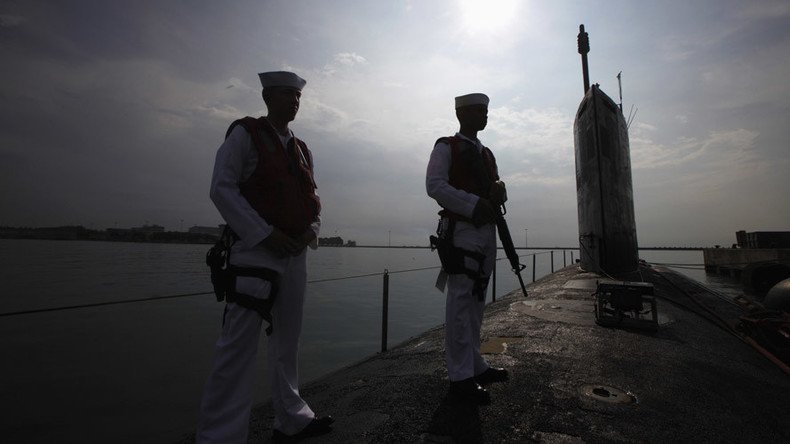‘Top priority’: Next-generation US nuclear submarines head Navy’s budget

The US Navy is requesting over $1.8 billion from Congress for the upcoming fiscal year to begin developing and building new nuclear ballistic missile submarines, a top priority for the military branch, according to a Congressional Research Service report.
Should the request for $773.1 million in advance procurement funding and $1.0911 billion for research and development be met, the Navy would be ready begin work on replacing 14 Ohio-class SSBNs, or nuclear ballistic missile submarines, with 12 new subs of a whole new class.
Fat but fit: #Navy lowers physical restrictions to stem personnel drain https://t.co/XUEKCEoBIepic.twitter.com/RjFjoeI7Hf
— RT America (@RT_America) March 6, 2016
The total cost of the program, known as SSBN(X) or the Ohio Replacement Program, is currently estimated to be $95.8 billion. The small fraction of $1.8 billion would be spent from the Navy’s fiscal year 2017 budget, which runs October 1, 2016 to September 30, 2017. The first new-generation submarine would be acquired in 2021, according to the Congressional Research Service report.
Known as the nuclear triad, land, air and sea nuclear capabilities are reemerging as areas of priority for rearmament and modernization. Submarines, which can remain underwater for months on end, are more likely to survive nuclear attacks than their land and air nuclear counterparts, although they may not be as accurate when it comes to attacks.
According to Popular Mechanics, the nuclear-armed subs “tend to be assigned retaliatory missions against ‘countervalue’ targets – civilian targets such as cities, factories, oil refineries, and transportation infrastructure.”
The Navy hopes to boost the subs’ capabilities in several ways. Among the goals are to develop a lifetime supply of nuclear fuel, as opposed to the current fleet of Ohio-class subs that refuel after twenty years. There is also the desire to move away from the mechanical drive system toward an electric drive propulsion system.
16 US ships used in Fukushima relief still contaminated with radiation - Navy https://t.co/svuZI0QZCjpic.twitter.com/w3bOucSzMW
— RT America (@RT_America) March 14, 2016
There is nothing unambitious about the incoming new class of nuke subs. They would get bigger, over 2,000 tons bigger than the current 18,750-ton Ohio submarines. They would also be a foot wider than the Ohio class.
The new class of subs would, however, carry fewer nuclear missiles than their Ohio predecessors. Still, being able to launch 16 Trident D-5 missiles carrying 10 nuclear warheads per missile is nothing to sneeze at. The plan for a whole fleet would total 1,920 nuclear warheads.
The fiscal year 2017 request is but a fraction of the $14.5 billion it will cost to build the first new submarine, while the rest will come at a bargain $4.9 billion a piece.












